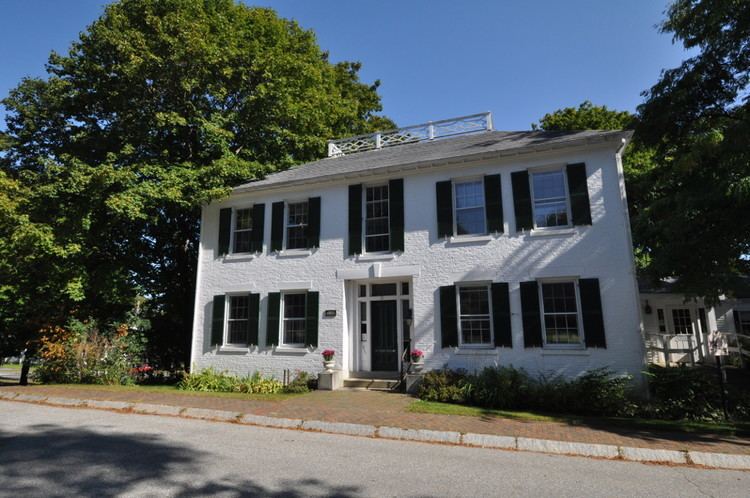NRHP Reference # 73000242 Area 41 ha | Address Wiscasset, ME 04578, USA Added to NRHP 12 January 1973 | |
 | ||
Similar Funtown Splashtown USA, Palace Playland, Bay of Fundy, Nickels‑Sortwell House, Beardsley Zoo | ||
The Wiscasset Historic District is a 101 acres (41 ha) historic district that encompasses substantially all of the central village of Wiscasset, Maine. The district includes at least 22 contributing buildings and two other contributing sites, one being a cemetery whose oldest stone is from 1739. Located on the west bank of the Sheepscot River and settled in the 18th century, Wiscasset was a prominent harbor in Mid Coast Maine, and a major shipbuilding and merchant port, until the War of 1812 ended its prosperity. The village center includes fine examples of Federal period architecture, most built between about 1780 and 1820, including one National Historic Landmark, the Nickels-Sortwell House. The district was listed on the National Register of Historic Places in 1973.
Contents
Description and history
The town of Wiscasset is located on the western bank of the Sheepscot River, at a wide point above the northern tip of Westport island, which the river passes on both sides en route to the Gulf of Maine. It is thus afforded with a deep and sheltered harbor area. Wiscasset was first settled by Europeans in the 1670s, but conflict with the local Native Americans (sometimes with French assistance) prevented significant permanent settlement until the 1760s. Incorporated as part of Pownalborough in 1760, it was incorporated as Wiscasset in 1794 when Pownalborough was split into Dresden, Alna, and Perkins. Wiscasset then also became the shire town of Lincoln County. It flourished as a shipbuilding and commercial center until the Embargo Act of 1807 damaged its economy, and the War of 1812 wrecked it. The town's economy has since been a shadow of that period's success, and development stalled, only sometimes punctuated by fires, which were mainly restricted to its waterfront areas.
During the height of its economic success, a significant amount of fairly high-style Federal architecture was built. Prominent examples are found along some of its residential streets, as well as United States Route 1, the main east-west route through the village, where the National Historic Landmark Nickels-Sortwell House stands. This house, built in 1805, is one of nation's finest examples of Federal architecture. Other prominent buildings include the public library, located in an 1805 brick mansion, and the former Wiscasset Academy building, built in 1807 and now housing an art gallery. The district also includes a few examples of later architecture, including the octagonal Capt. George Scott House on Federal Street. The Wiscasset Jail and Museum, built in 1809, is one of the state's oldest surviving jails, and is (like the Nickels-Sortwell House) a museum open to the public.
Other
The Rutherford and Martha Ellis House, a Colonial Revival cottage built in 1939 in Atlanta, Georgia, was based on a Wiscasset cottage that was built in 1770.
